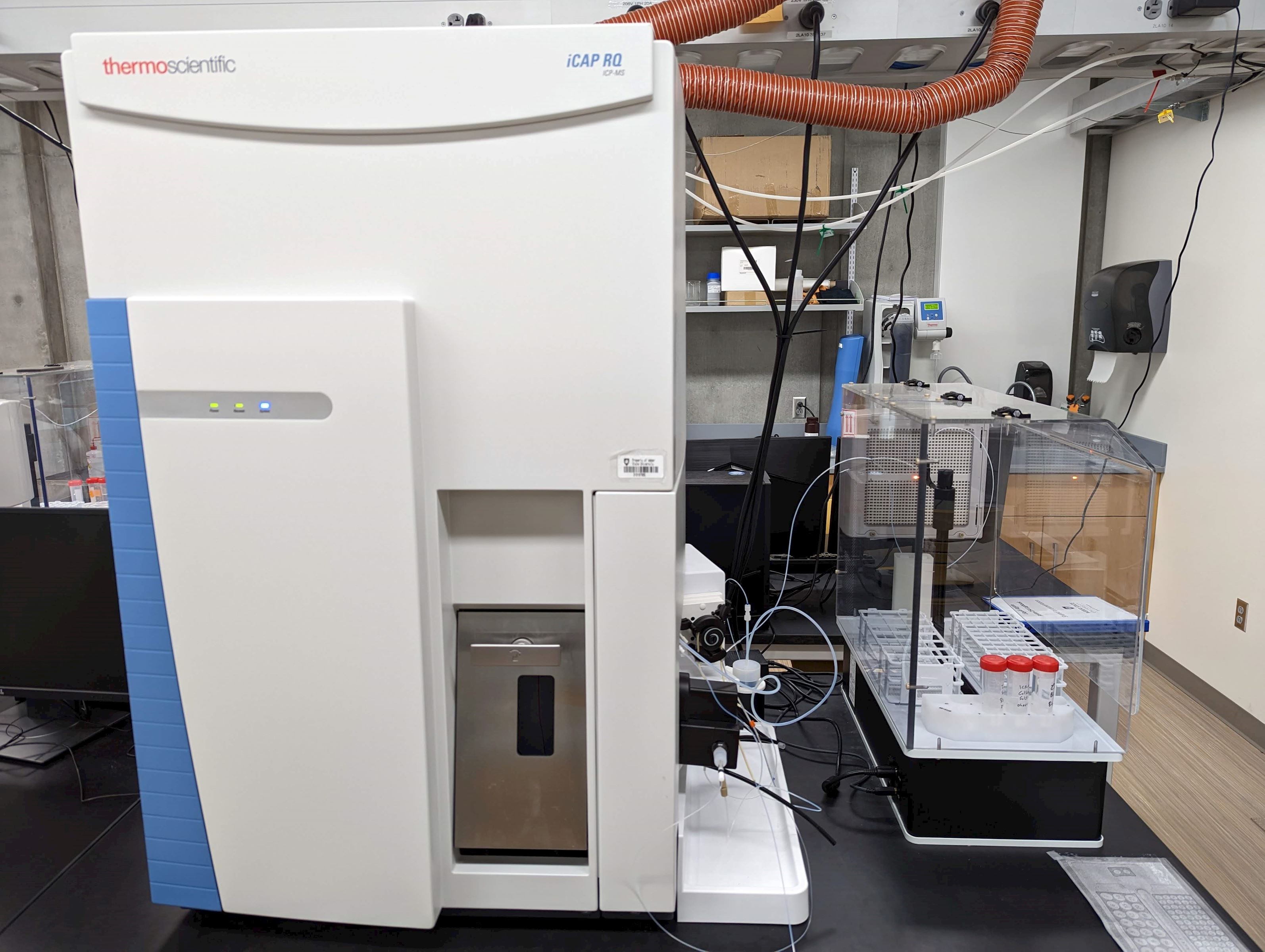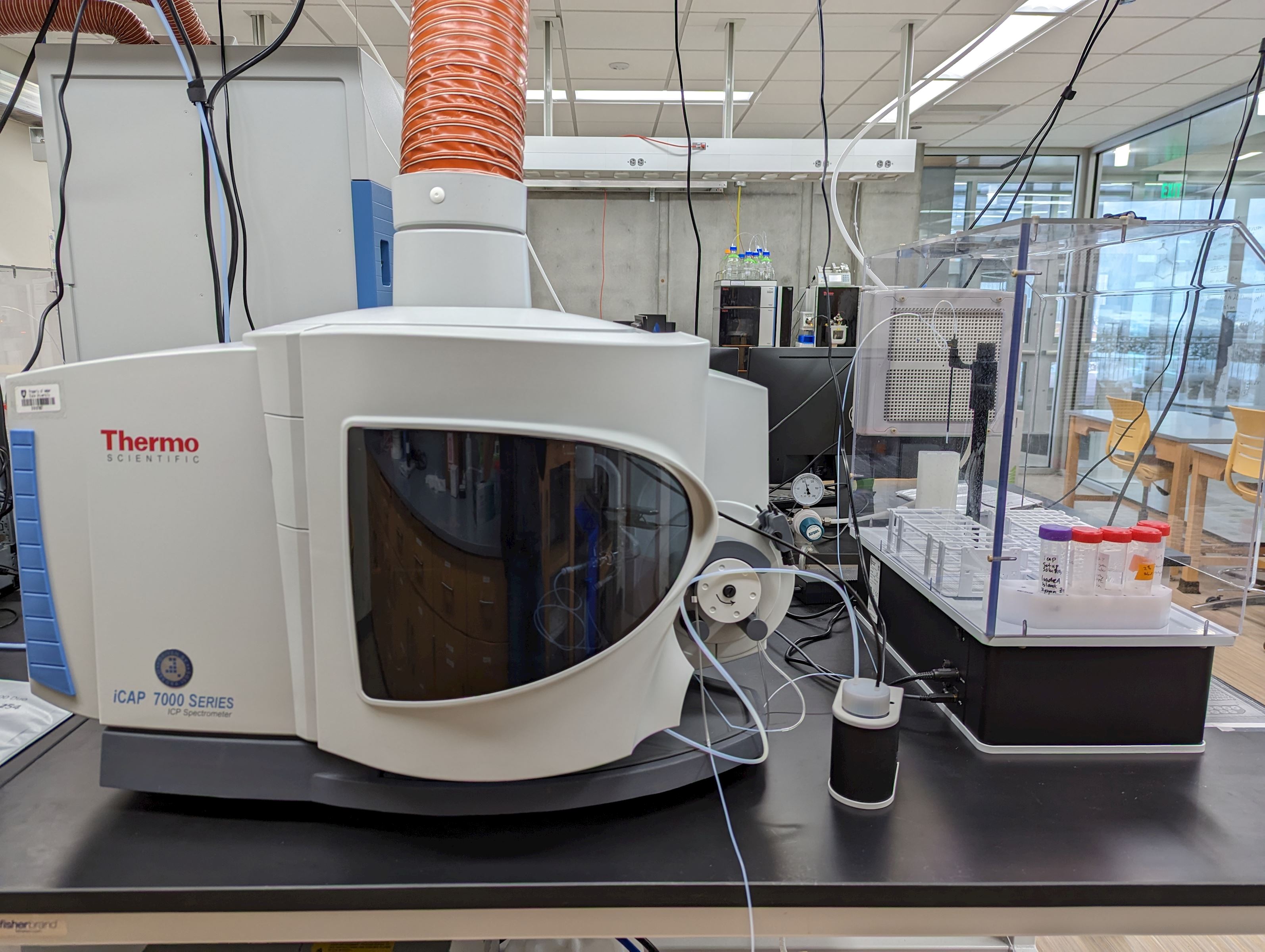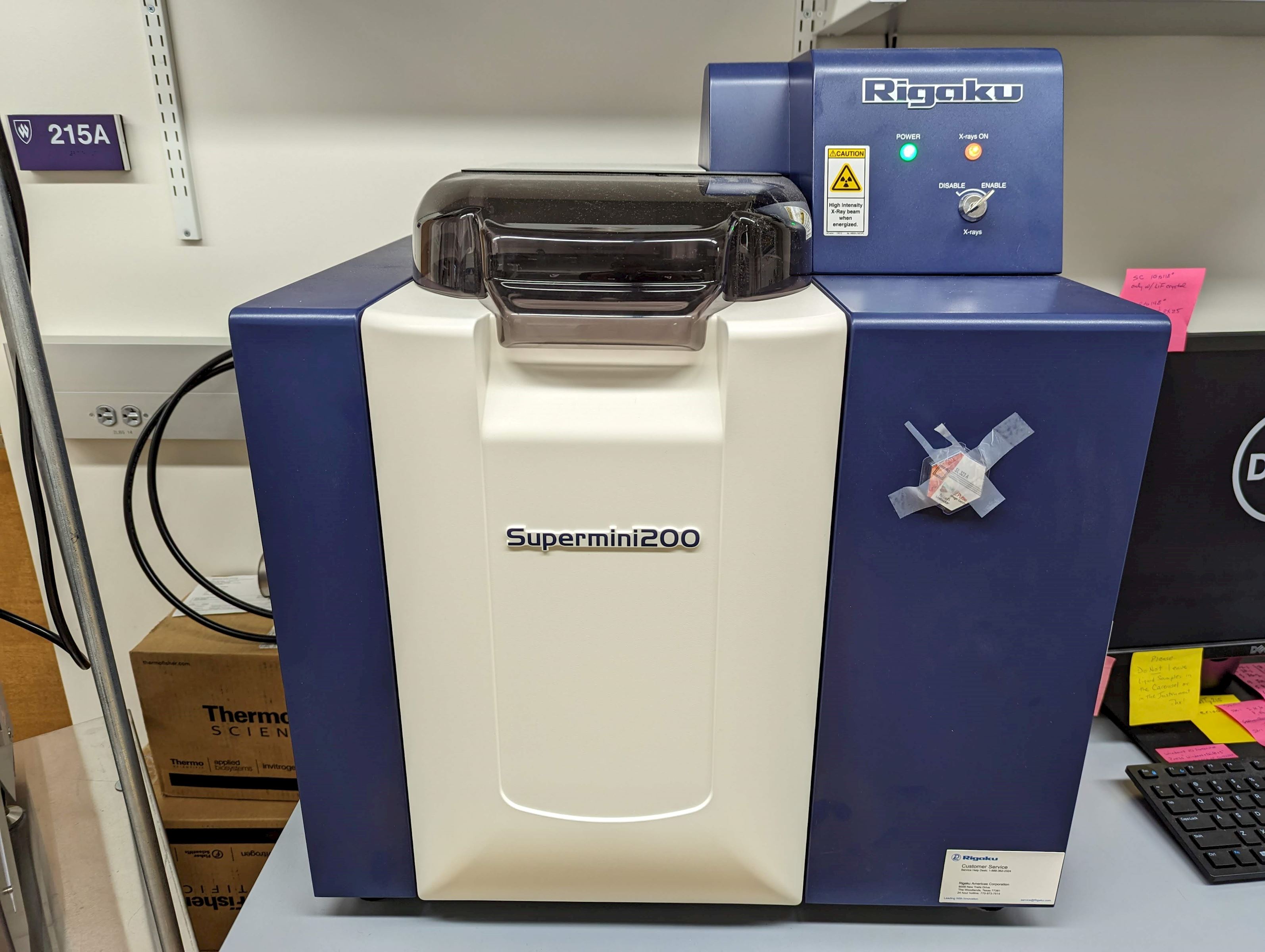Elemental Analysis
Thermo ICP-MS iCAP RQ [TY 254]

The Inductively Coupled Plasma Mass Spectrometer (ICP-MS) uses an argon plasma torch that is 6,000 degrees Kelvin (as hot as the sun) to ionize elements that are introduced into the system. The ionization allows for the elements to be separated by the mass spectrometer from each other and detected. The ICP-MS can determine the concentrations of dozens of elements simultaneously, from Lithium to Uranium.
The ICP-MS is one of the most sensitive instruments that exists, it can detect elements down to part per trillion level (ppt) for some elements. 1 part per Trillion is equivalent of 30 second out of 1 million years or one teaspoon in 2000 Olympic swimming pools. The autosampler attached to the ICP-MS can be programmed to analyze over a hundred samples at a time.
Example Use Cases:
- Testing drinking and groundwater for trace heavy metals
- Detect trace elements in biological samples for toxicology
- Isotope Ratio analysis for tracing origin of products (detecting if Champagne grapes came from the correct region of France)
Thermo ICP-OES iCAP 7400 Duo [TY 254]

Inductively Coupled Plasma Optical Emission spectrometry (ICP-OES) uses an argon plasma torch that is 6,000 degrees Kelvin (as hot as the sun) to excite samples that are introduced into the system.
The excited atoms release specific wavelengths of light are then detected as emission lines by a sophisticated charge coupled device (CCD) that is divided into pixels, like the camera in a smartphone.
These elements can be detected down to the parts per billion (ppb) level, which is equivalent of one drop into a swimming pool. This isn’t as sensitive as the neighboring ICP-MS but the ICP-OES is a more robust system that can handle much dirtier samples. Arsenic is allowed in drinking water to a level of 10 ppb by the EPA.
Example Use Cases:
- Monitoring elemental makeup of highly salty Great Lake Salt water
- Analysis of toxicity in environmental samples
- Quality Control of chemical products (pharmaceuticals, petrochemistry, batteries)
Thermo UltraDry EDS X-Ray MicroAnalysis (Attached to SEM) [TY 116]
Energy Dispersive Spectroscopy (EDS) or Energy Dispersive X-ray Analysis (EDAX) use the electron beam produced by the Scanning Electron Microscope (SEM) to generate X-rays that come off the sample that is being bombarded by electrons. The X-rays that are produced will have characteristic wavelengths that is dependent on the element that is present. These wavelengths can be analyzed and plotted to give a full elemental composition of the sample that is being analyzed.
The electron beam can also be directed precisely at different points of the sample, even while under high magnification to discriminate between different elements at the smallest scales.
Example Use Cases:
- Determining the properties of Zircon crystals
- Checking sputtered metals on Solar cells
- Elemental determination of any solid material
Rigaku SuperMini200 X-Ray Fluorescence (XRF) [TY 215]
One of the most powerful techniques for elemental analysis, wavelength dispersive X-ray fluorescence, the Supermini is a versatile benchtop model designed with student use in mind. The SuperMini200 has the capability to analyze geologic samples of all types and the elemental capabilities range from Oxygen to Uranium.
Similar to the EDS, this detects the distinctive X-ray spectral lines that come off of samples that have been excited. This allows for analysis of the precise makeup of samples.
Example Use Cases:
- Determining bulk elemental makeup of solid samples (rocks, powders, liquids)
- Analyzing rocks for mineral composition
MiniFlex II X-Ray Diffractometer (XRD) [TY 242]
A beginner-friendly x-ray diffractometer for performing theta/2-theta scans. Optimized for powder diffraction but can accommodate other specimen types. Quantitative as well as qualitative analysis of polycrystalline materials.
XRD analysis, by way of the study of the crystal structure, is used to identify the crystalline phases present in a material and thereby reveal chemical composition information. Identification of phases is achieved by comparison of the acquired data to that in reference databases.
Example Use Cases:
- Diffraction pattern comparison of polycrystalline materials
- Quality control management of raw materials and products
- Chemical identification based on crystal structure
Nippon MA-3000 Direct Mercury Analyzer [TY 430]
The Direct Mercury Analyzer determines total mercury in solid, liquid and gaseous matrices using the principle of thermal decomposition, gold amalgamation, and atomic absorption.
The analyzer is versatile and can detect mercury in a variety of environmental samples from fish tissues, soil, sludge, fertilizer, feed, foods, polymers, electronic materials, biological tissue, medicine, and blood.
Example Use Cases:
- Analyze sediment to investigate hazardous local mercury levels
- Observe mercury levels as they move through the food web in different animal and plant samples
CEM MARS 6 Microwave Digster [TY 215]

The CEM MARS 6 Microwave digestion systems can be used to digest solids into liquid samples for detection on ICP-MS and ICP-OES instruments. Can digest rocks, plants, soil, foods, pharmaceuticals, plastics and metals. Makes it simple to break down this large variety of samples with pre-programmed easy to follow recipes.
Used in modern EPA methods for preparing environmental samples for elemental analysis.
Example Use Cases:
- Digest local soil samples from community garden to monitor nutrient and other elemental composition
- Take solid matter from contaminated waste sites to determine the level of hazardous heavy metals.



